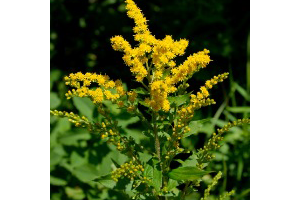Wrinkleleaf goldenrod is native to the U.S. and is in the Asteraceae (Aster Family)
Photo Credit: © Abraham Miller-Rushing
Solidago rugosa
Common Name: wrinkleleaf goldenrod
Plant Functional Group: Forb
Class > Order > Family: Magnoliopsida > Asterales > Asteraceae
